


 |  |  |
|---|
| ||
|---|---|---|
| The A'Matu'd is a collection of theological writings by Hekoye philosophers and archivists, once on "speakerboards", but now on more compact scrolls or even in books. | ||
| ||
 Airships are a common mode of transportation for those who have dealings between Rephidim and the lands of Sinai below. Their forms vary greatly, but the typical structure is that of a gondola -- sometimes seaworthy -- suspended underneath a huge bag containing lighter-than-air gases such as hydrogen or helium. Some sport large sails to better catch the wind, though these are most often found on airships with on-board wizards of the Sphere of Air, for whom such sails may perhaps have more than purely mechanical importance. Airships are a common mode of transportation for those who have dealings between Rephidim and the lands of Sinai below. Their forms vary greatly, but the typical structure is that of a gondola -- sometimes seaworthy -- suspended underneath a huge bag containing lighter-than-air gases such as hydrogen or helium. Some sport large sails to better catch the wind, though these are most often found on airships with on-board wizards of the Sphere of Air, for whom such sails may perhaps have more than purely mechanical importance. Since the advent of the discovery of the Gateway Tower and trade with Abaddon, many airships have been replaced with semi-mechanical zeppelins, relying on complex propulsion systems. Although zeppelins on Abaddon move primarily with spinning propellers, Sinaian designs employ flapping wings, pumping bellows, and all sorts of seemingly unnecessary moving parts - which engineers insist are crucial to the functioning of such craft on Sinai. | ||
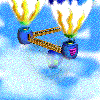 The diminutive Aelfins of Aelfhem build airships that do not rely upon lighter-than-air gases, but instead upon hot air for buoyancy. While they do not suffer from the problems of combustible envelopes that most Sinai airships do, they have a limited range due to fuel requirements. Due to a long-standing conflict with some Eeee clans living in the mountains bordering Aelfhem, for a long time these craft were no longer made, but a recent cessation of the hostilities has allowed for their production once more. The diminutive Aelfins of Aelfhem build airships that do not rely upon lighter-than-air gases, but instead upon hot air for buoyancy. While they do not suffer from the problems of combustible envelopes that most Sinai airships do, they have a limited range due to fuel requirements. Due to a long-standing conflict with some Eeee clans living in the mountains bordering Aelfhem, for a long time these craft were no longer made, but a recent cessation of the hostilities has allowed for their production once more.
| ||
| Berryswort tea is a popular non-alcoholic "wake-up" drink in Ashdod, especially among fruit-bat Eeee. The best blends come from Saskanar, though other varities are cultivated elsewhere in Ashdod, and to a lesser degree on Sinai at large. | ||
| ||
| ||
 Iron and steel are exceedingly rare on Sinai. Therefore, most armor that is found is of hardened leather ... or else of "chitin", made of pieces of very tough shell. Iron and steel are exceedingly rare on Sinai. Therefore, most armor that is found is of hardened leather ... or else of "chitin", made of pieces of very tough shell. The primary sources for chitin for use in constructing armor are the hives of the Zelaks. However, it is not unheard of that armor might be constructed from (hopefully) cast-off shells of Vykarins, though the latter type of chitin is considered inferior. | ||
 Chronotopian Eggs are perhaps the most widespread curio to be acquired from the nation of Chronotopia. They are, in short, pocket watches, made of intricate parts with a certain degree of redundancy in systems, reknowned for accuracy even on the surface of Sinai (though this is greatly tested if one decides to take them into Forbidden Zones or other areas of high magical activity). The name comes from the tradition of making the devices shaped like little eggs, either with a glass window on one side revealing the watch face, or else having the egg hinge open to reveal its interior. It is also common to have glasswork making the intricate gear-work inside visible, due to the novelty, and for the "shell" to be decorated with inlaid designs and/or hand-painted (and enameled) scenes. Each one is hand-crafted, and there is a great deal of variety in additional "features" given by the designers. Chronotopian Eggs are perhaps the most widespread curio to be acquired from the nation of Chronotopia. They are, in short, pocket watches, made of intricate parts with a certain degree of redundancy in systems, reknowned for accuracy even on the surface of Sinai (though this is greatly tested if one decides to take them into Forbidden Zones or other areas of high magical activity). The name comes from the tradition of making the devices shaped like little eggs, either with a glass window on one side revealing the watch face, or else having the egg hinge open to reveal its interior. It is also common to have glasswork making the intricate gear-work inside visible, due to the novelty, and for the "shell" to be decorated with inlaid designs and/or hand-painted (and enameled) scenes. Each one is hand-crafted, and there is a great deal of variety in additional "features" given by the designers.
| ||
| ||
 [Obscure information that just about nobody knows about] [Obscure information that just about nobody knows about] A mysterious magical item that arrived with an exile claiming to be a knight. Little is known of this item. It was stolen before it could be properly examined by the Temple. | ||
| ||
 Golems are rare manifestations of some of the more powerful magic to be found on Sinai -- animated constructions of various elements created by accomplished mages to do their bidding. These beings have no self-awareness, and are therefore capable of great feats of "bravery", having no care for their own (usually very short) existence. Consequently, they're typically phenomenally stupid as well ... though some are rumored to possess something of the intelligence and perhaps even personality of the mage that created them. Golems are rare manifestations of some of the more powerful magic to be found on Sinai -- animated constructions of various elements created by accomplished mages to do their bidding. These beings have no self-awareness, and are therefore capable of great feats of "bravery", having no care for their own (usually very short) existence. Consequently, they're typically phenomenally stupid as well ... though some are rumored to possess something of the intelligence and perhaps even personality of the mage that created them.
| ||
| Great Gretchen has also become a byword for many Chronotopians, almost to the point of anthropomorphization, in such phrases of "What in the name of Gretchen," "I swear by Great Gretchen," and so forth. As far as can be told, there is no "Gretchen" that the tower is actually named after, but it is simply a nickname of unknown origin that became applied as a matter of tradition. | ||
| ||
| Khattan Ha'clohi, also known as halfcloaks, or whirlcloaks, are specially-made zolken garments from Abu Dhabi, made for travelling places with extremes of temperature, and usually worn in pairs. They are fashioned much like cloaks, but each cover a little more than half the body, worn on one shoulder or hip. They are composed of multiple layers of cloth, tiered and dyed from light to dark colors on one side, and dark to light on the other, such that one side is predominantly light or dark. The top of the ha'clohi has a broad, lightly coloured sash which is wrapped around the neck and head for upper-torso wearing, or around the waist for wearing over the legs. To make them requires a specific weave, and knowledge that only a few zolk tailors possess and jealously guard. Taking apart ha'clohi hasn't revealed the secret as to how they are made, but has shed some light as to how they keep their wearers cool or warm. Part of it lies in the colouration. The sash that goes over the waist or head is lightly coloured, so reflects light. The light side of the garment also reflects light, while the darker side absorbs light to keep the wearer warm when it is desired. The other way the ha'clohi works is by a series of vent-holes near folds on the inside. When the wearer walks, wearing the garment light-side up, air is circulated as the folds are moved. The more the wearer moves, the more pronounced the effect is. When the garment is worn dark-side up, the vents are pressed against fabric, and effectively closed, trapping air in pockets to be warmed. Only zolk seems to work for this process. | ||
| K'tinza is a board game played on a grid, very much akin to chess. It is a popular game among the social elite, and to be a master at this game is to command considerable respect in some circles. This game is a predecessor of and closely related to k'trinzhai, which is primarily different in that the latter involves three players rather than two, adding a whole new element to the game. Still, k'tinza is the more widely played and respected of the two games, considered to involve more raw logic than the psychological "mind games" that so often dominate k'trinzhai's interplays of alliance and betrayal. | ||
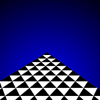 K'trinzhai is a board game played on a triangle-tiled playing board, with three players. The rules are closely related to k'tinza, a chess-like game, aside from the shift from two- to three-player competition. In a three-way game, a new element is added, as k'trinzhai champions have to rely to some degree on psychology, as it is often that the apparently more powerful opponent is bested by an alliance of the two others before they turn on each other to finally win the game. K'trinzhai is a board game played on a triangle-tiled playing board, with three players. The rules are closely related to k'tinza, a chess-like game, aside from the shift from two- to three-player competition. In a three-way game, a new element is added, as k'trinzhai champions have to rely to some degree on psychology, as it is often that the apparently more powerful opponent is bested by an alliance of the two others before they turn on each other to finally win the game.In political circles, references to k'tinza or k'trinzhai are often made in much the same way allusions are made to chess in our own world when talking of "pawns", "check and mate", and so forth. | ||
| ||
 This is a common headdress for dwellers in the city of Abu Dhabi, near the ocean, in the Himaat, and for peoples in surrounding areas. Roughly, it's a cross between a turban and a drape that covers the back of the head and neck (and sometimes ears and/or shoulders), to shield one from the sand. This is a common headdress for dwellers in the city of Abu Dhabi, near the ocean, in the Himaat, and for peoples in surrounding areas. Roughly, it's a cross between a turban and a drape that covers the back of the head and neck (and sometimes ears and/or shoulders), to shield one from the sand.
| ||
| ||
 This device, occurring in variant forms, is used by Inquisitors of Rephidim Temple during Exile Processing. It serves the purpose of teaching the wearer of the helmet the common tongue of Rephidim - Rephidim Standard - though its original purpose is unclear, and the technology used to create it is beyond current understood levels. With the exception of certain discoveries of First Ones sites, this technology is unique to Rephidim Temple. This device, occurring in variant forms, is used by Inquisitors of Rephidim Temple during Exile Processing. It serves the purpose of teaching the wearer of the helmet the common tongue of Rephidim - Rephidim Standard - though its original purpose is unclear, and the technology used to create it is beyond current understood levels. With the exception of certain discoveries of First Ones sites, this technology is unique to Rephidim Temple.
| ||
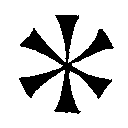 The Sphere of Light, also known as the Sphere of Scrying, is one of twelve Spheres of magic recognized by the College Esoterica. Mages of this Sphere typically dress in robes of yellow, symbolizing Primus (the sun), which is also the name of the rune associated with this Sphere. The Sphere of Light, also known as the Sphere of Scrying, is one of twelve Spheres of magic recognized by the College Esoterica. Mages of this Sphere typically dress in robes of yellow, symbolizing Primus (the sun), which is also the name of the rune associated with this Sphere. Spells of the Sphere of Light primarily deal with the acquisition of knowledge, to divine the truth, in whatever form it might appear. Contrary to what one might think, it does not deal so much with physical manipulation of light, per se, though a few spells of illumination are in their repertoire. According to Rephidim scholarship, the Sphere of Light is most closely associated with the Sphere of Spirit (Spirit, Sphere of), and diametrically opposed to the Sphere of Shadow (Shadow, Sphere of). | ||
| Naga truffles are typical of Naga candy. Namely, since Nagas swallow their food rather than chewing it, their food typically focuses more on outer textures and taste rather than the interior. Thus, Naga truffles, made to look like Bromthen truffles, have very sweet and lumpy exteriors, but the interior is pasty and, while semi-nutritious and easily digested by the Nagai, rather tasteless. | ||
| ||
 The Ognoigh is a close relative of the Squibbit, being also found primarily in the Savan, though less often part of the diet of the Nagai. Rather, it is valued more for its peculiar property of changing color when pressure is applied to different parts of its squishy length. The Ognoigh is a close relative of the Squibbit, being also found primarily in the Savan, though less often part of the diet of the Nagai. Rather, it is valued more for its peculiar property of changing color when pressure is applied to different parts of its squishy length. It even retains these properties for a limited time after death, and thus a minor amusement is often made for children by treating oghnoigh bodies to negate toxins in their bodies (but also effectively destroying any nutritional value in the process) and preservatives. Naga children can then slap the oghnoigh bodies silly, producing interesting color patterns, until they "wear out". Oghnoighs can also be fashioned into jewelry before their bodies dry out, and it's a common belief that jewelry will reflect the "mood" of the wearer, since it seems to react to body temperature as well as pressure. This aspect of the ognoigh is exploited mostly in exports. Nagas, after all, are cold-blooded. It is believed that oghnoighs reproduce by breaking off into smaller oghnoighs. Thus, they're built to take a lot of punishment before they're ready to reproduce. | ||
 The Plaguebringers were long thought monsters or weapons of legend, but the War of the Plaguebringers made it painfully clear that they were indeed real, as they descended upon Rephidim. The Plaguebringers were long thought monsters or weapons of legend, but the War of the Plaguebringers made it painfully clear that they were indeed real, as they descended upon Rephidim. While the Plaguebringers are armed to resist most any blow, it was discovered that they have two weak points: their wings, and the "eyes". The pilot resides in a hollow space in the head behind the latter, making him vulnerable to attack. | ||
 "Processing" is performed by Rephidim Temple on all Exiles that are brought to the offices of the Inquisition. It involves the use of some items of especially high technology, not fully understood even by its users, that allow Exiles from other worlds to quickly learn Rephidim Standard. After that, it is the duty of the Inquisitor to learn about the Exile -- whether this Exile possesses any magical powers or special skills or abilities, from what world the Exile came, how he/she/it got here, and so forth. It is also necessary to find out how the Exile may be able to fit into society, especially since part of the traditional process is that the Exile must pay the cost for his own Processing -- again, by tradition, one gold Shekel. "Processing" is performed by Rephidim Temple on all Exiles that are brought to the offices of the Inquisition. It involves the use of some items of especially high technology, not fully understood even by its users, that allow Exiles from other worlds to quickly learn Rephidim Standard. After that, it is the duty of the Inquisitor to learn about the Exile -- whether this Exile possesses any magical powers or special skills or abilities, from what world the Exile came, how he/she/it got here, and so forth. It is also necessary to find out how the Exile may be able to fit into society, especially since part of the traditional process is that the Exile must pay the cost for his own Processing -- again, by tradition, one gold Shekel.
| ||
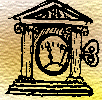 This Chronotopian invention is occasionally found in use during First One site expeditions, or else on better-equipped airships, used to measure instances of "quantum uncertainty" -- the phenomenon that accompanies areas where magic works more strongly, and technology tends to fail. In abstract, the quantometer consists of one or two redundant devices of differing levels of complexity, expected to react with varying degrees to an increased level of quantum uncertainty -- in theory the way a device for measuring temperature might be made by putting two strips of metal together that expand at different rates with temperature, resulting in the needle bending to one side as temperature rises. The result of the quantometer is not nearly so easy to discern, however, given the inherently random nature of the phenomenon, thus only being of use to specially trained technicians, and even then without great accuracy. Nonetheless, it can serve as an advance warning of an unmarked Forbidden Zone or other phenomenon ... or some devices have even been used as a means of determining altitude in "instrument only" flight conditions. This Chronotopian invention is occasionally found in use during First One site expeditions, or else on better-equipped airships, used to measure instances of "quantum uncertainty" -- the phenomenon that accompanies areas where magic works more strongly, and technology tends to fail. In abstract, the quantometer consists of one or two redundant devices of differing levels of complexity, expected to react with varying degrees to an increased level of quantum uncertainty -- in theory the way a device for measuring temperature might be made by putting two strips of metal together that expand at different rates with temperature, resulting in the needle bending to one side as temperature rises. The result of the quantometer is not nearly so easy to discern, however, given the inherently random nature of the phenomenon, thus only being of use to specially trained technicians, and even then without great accuracy. Nonetheless, it can serve as an advance warning of an unmarked Forbidden Zone or other phenomenon ... or some devices have even been used as a means of determining altitude in "instrument only" flight conditions.
| ||
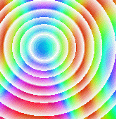 This exotic liquid from the Himaat is peculiar in that it is made up of several flourescent colors of the rainbow which will swirl about but never actually blend together. The water is quite poisonous to most species, but to the mutant Nohbakim, it is a strong intoxicant. This exotic liquid from the Himaat is peculiar in that it is made up of several flourescent colors of the rainbow which will swirl about but never actually blend together. The water is quite poisonous to most species, but to the mutant Nohbakim, it is a strong intoxicant.
| ||
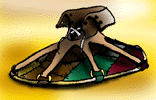 These variants of snowshoes are a necessity for walking in the Sea of Sand in the Himaat, distributing weight evenly enough to keep the wearer from sinking into the sand, although these items are unwieldy and hard for new users to get accustomed to using effectively. These variants of snowshoes are a necessity for walking in the Sea of Sand in the Himaat, distributing weight evenly enough to keep the wearer from sinking into the sand, although these items are unwieldy and hard for new users to get accustomed to using effectively.
| ||
| ||
| According to popularly accepted history, the Silent Speech was invented by the Naga and taught to the feral cheetah-oids now known as "Savanites", for it is widely believed they are very simple-minded and incapable of coming up with something so complex as a language on their own. Generally, it is held that evidence pointing to the use of the Silent Speech only goes so far back as approximately 3100 RTR (Rephidim Temple Reckoning), though, depending upon one's demands for corroboration and proof of authenticity, the language may go back much further than that, even very close to the Expedition (approaching 0 RTR). The Silent Speech is fairly well-known among the Naga, though they have their own spoken language which is used for daily discourse. Savanite Sign breaks into many "dialects", but it particularly can be broken into four main groups, which overlap each other somewhat: Formal Sign -- This is the most basic and immutable form of the Sign, consisting solely of hand signs which each represent words or ideas, and which can be combined to form more complex words and phrases. It is possible, by restricting oneself to "Formal" Sign, to communicate in Savanite using just one free hand, but it is a relatively slow process, and many Savanites do not even bother learning all the many word combinations required for this manner of communication. Free Sign -- This is the form found among any extant tribes in the wild, and adds movement of the hands as well as other gestures to more quickly spell out common words and phrases, as well as to add more expression and "inflection" through body posture. It provides a much quicker way of conversing in Savanite, but suffers in that particular gestures vary greatly from tribe to tribe, as new gestures are added to suit the needs for daily usage. Especially, names for particular beasts or plant types vary greatly from area to area, often consisting of a gesture which is meant to mimic some appearance or action of the creature in question. Standard Sign -- This is the Sign used by Savanite slaves in Rephidim-dominated circles. It is based upon "Formal" Sign, but adds many gestures in the fashion of "Free" Sign. Furthermore, it also adds signs that allow for the representation of phonetic names -- especially important since slaves are generally given names that simply have no "meaning" in words, and their masters' names are no different in this respect. This language is fairly standard. (PC Savanites will most likely know "Standard Sign". This encompasses "Formal" as well.) Short Sign -- This is an offshoot of "Standard", reintroducing specialized and non-standard "phrases" which vary greatly depending upon one's circles of communication. Basically, it makes use of very subtle gestures that can be disguised as normal movements, in order to convey information to slip past the notice of masters. These signs tend to be very specialized based on situations, and a single gesture can involve a very specific and even complex message. However, there IS some carry-over. These generally focus on statements of warning, or of imperatives. Perhaps needless to say, this is generally not a variant of the language known by those other than Savanite slaves. As a matter of established example, wiggling of the ears is a sign that suggests Savanite laughter, and is found across almost all variations of the sign. (In fact, it's almost reflexive for Savanites.) Of course, this is not an aspect used by Nagas, since they have no ears. As another note, the sign in the icon at the top of this entry is the Formal sign for "Star". Many of the Formal signs have multiple possible meanings, though, depending upon context. | ||
| ||
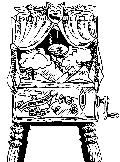 A mechanical device, typically coin-operated, which make a little mechanical "play", in order to animate some sort of story. The length of these "plays" varies greatly, but they typically only last a few seconds or -- at the most -- minutes long. A few variations allow some sort of interaction from the viewer, making them games of a sort. A mechanical device, typically coin-operated, which make a little mechanical "play", in order to animate some sort of story. The length of these "plays" varies greatly, but they typically only last a few seconds or -- at the most -- minutes long. A few variations allow some sort of interaction from the viewer, making them games of a sort.Most Shekelodeons are of Chronotopian design, but there have been rumors of Titanian versions of Shekelodeons, which are more akin to games of chance ... purportedly with dire consequences for anyone who has the misfortune of losing. | ||
| ||
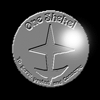 The Shekel is the standard unit of currency in Rephidim, and, since it is the dominant power to deal with, in Sinai at large. The Shekel is the standard unit of currency in Rephidim, and, since it is the dominant power to deal with, in Sinai at large. When one refers to a "shekel" alone, it typically refers to the basic unit, a ceramic coin which is worth a cup of grain -- or roughly $1 for comparison. Greater denominations are represented by copper, iron, silver, and ultimately gold -- progressively rarer minerals on Sinai. 1 gold = 5000 shekels; 1 silver = 1000 shekels; 1 iron = 500 shekels; 1 copper = 100 shekels. The typical inn costs 5 shekels per night, not including food, and meals run between 3 and 5 shekels. There are half- and quarter-shekel pieces. | ||
| ||
 One of the more exotic features of Sinai is that there are several "islands" which float upon the air, borne by unknown means, following unpredictable routes across the sky which are not necessarily determined by the winds. The largest and best known of these is Rephidim, which, until recently, was the only one widely known to be populated. One of the more exotic features of Sinai is that there are several "islands" which float upon the air, borne by unknown means, following unpredictable routes across the sky which are not necessarily determined by the winds. The largest and best known of these is Rephidim, which, until recently, was the only one widely known to be populated. Other sky islands of note would include: Paradys, Tarsus and Fetiss. Although the sky islands tend to hover around 10,000 feet ASL, they sport localized phenomena that cancel out, to some degree, the very low air pressure that would be associated with such altitude. For this reason, the differences in air pressure often result in small atmospheric variances, such as clouds of mist which accompany the sky islands. There is much disagreement about what governs the movement of the sky islands. For all intents and purposes, it appears that they are random. However, the Captain-Astromancer has long been held to be able to predict the course of Rephidim's movements, and there have been whispers among some circles of some sort of connection between the movements of the sky islands and that of celestial bodies. | ||
| ||
| This collosal testament to Titanian 'ingenuity' is a nonfunctional attempt at an airship that is imbedded in the side of a mountain. How it got into the air in the first place to even crash into the mountain is an ancient mystery. Many Titanians have devoted themselves to discovering this, and those faithful pilgrims who have journeyed to the site to help in its reconstruction have formed a city out of the wreckage and surrounding "facilities", known by the same name. If there is a "capitol" of Titania, this would be it, for even members of rival tribes find a common goal in trying to make the single largest machine of Titanian construction somehow work. Given the great amount of metal used in this ship, not only is this accomplishment terribly unlikely, but it's a tempting prospect to looters. (Getting through so many hammer-wielding Titanians would be quite a feat, however.) | ||
| ||
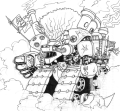 Big. Real big. Titans are creations of Titanians, and their ultimate source of pride, the embodiment of the best (and worst) of their creative energies. These collosal machines of war, often made to resemble great "robotic" Titanians (or ferocious beasts) are powered by steam ... and, due to the effects of quantum uncertainty (and Titanian engineering) have a tendency to blow up at times. True to Titanian methods of operation, they have little to nothing in the way of controls in the common sense, being designed to change direction, fire weapons and perform other weapons by being whacked with a big hammer in the proper place at the proper time. In battle, hordes of Titanians can be seen haphazardly clinging onto every available space on these machines ... or chasing along in case an open spot frees up. Fortunately for everyone else, they typically don't make it very far. Big. Real big. Titans are creations of Titanians, and their ultimate source of pride, the embodiment of the best (and worst) of their creative energies. These collosal machines of war, often made to resemble great "robotic" Titanians (or ferocious beasts) are powered by steam ... and, due to the effects of quantum uncertainty (and Titanian engineering) have a tendency to blow up at times. True to Titanian methods of operation, they have little to nothing in the way of controls in the common sense, being designed to change direction, fire weapons and perform other weapons by being whacked with a big hammer in the proper place at the proper time. In battle, hordes of Titanians can be seen haphazardly clinging onto every available space on these machines ... or chasing along in case an open spot frees up. Fortunately for everyone else, they typically don't make it very far.
| ||
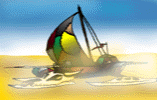 These sand-boats are the common means of transportation for the scavenger race known as the Nohbakim. Given the scarcity of wood to be found in the desert, and means of making cloth, the sails are typically made of patched- together hides, while the structure is made of a mish-mash collection of scavenged materials, including bones of large desert creatures. Smaller versions of the triremes are known as "Kooshkie Sleds", relying on propulsion by teams of Kooshkies instead of sails. These sand-boats are the common means of transportation for the scavenger race known as the Nohbakim. Given the scarcity of wood to be found in the desert, and means of making cloth, the sails are typically made of patched- together hides, while the structure is made of a mish-mash collection of scavenged materials, including bones of large desert creatures. Smaller versions of the triremes are known as "Kooshkie Sleds", relying on propulsion by teams of Kooshkies instead of sails.
| ||
| ||
| Zolk is a silk-like fabric with a metallic sheen to it, available in a number of varieties. The rarest sort, "platinum" zolk, has puncture-resistant properties that make it highly favored by the wealthy, as it can give them fashionable clothing that still affords a degree of protection without the bulk of armor. Zolk is manufactured in the Himaat, fashioned from strands of material left in the desert sands by roaming gooshurms. Some Zerda clans are brave enough to run "gooshurm farms", but these only produce the more common varieties of zolk. The strands required for the rarer and more durable varieties of zolk (such as "platinum" zolk) are only to be found in the Sea of Sand by determined prospectors. These strands of material are actually pieces of the stomach linings of gooshurms that are shed from time to time, and float to the surface in the strange silty material of the Sea of Sand. Zolk is a major export of Abu Dhabi, and the more common varieties can be found easily in Rephidim (especially in the Bazaar). Availability elsewhere on Sinai varies greatly depending on geographic location (proximity to the Himaat) and just how much one is willing to pay for zolken garments. |
| Home Page |
Player Guide |
Log Library |
Recent Logs |
|---|---|---|---|
| Encyclopedia |
Dramatis Personae |
Art Gallery |
Moz Ezley Asylum |